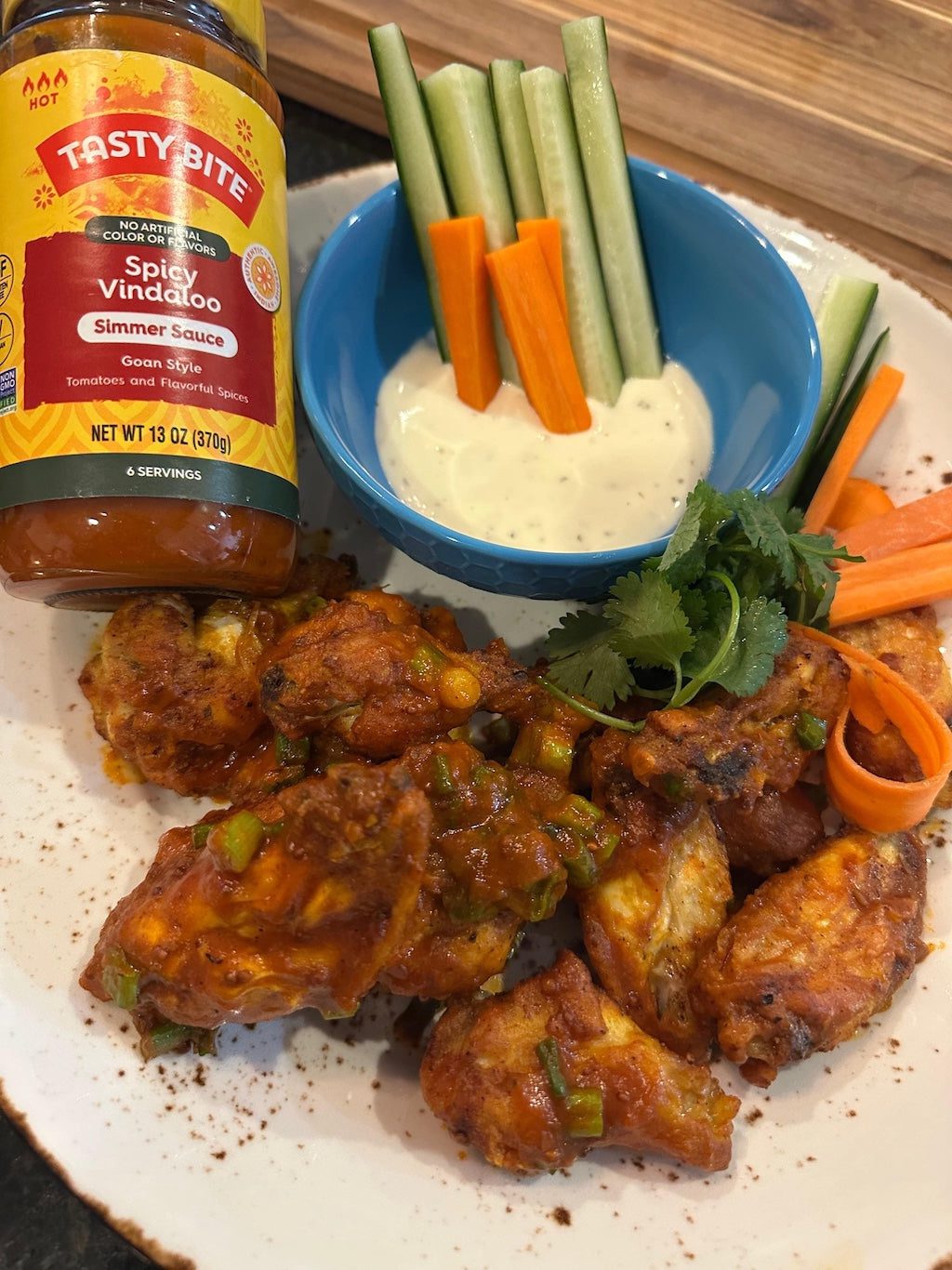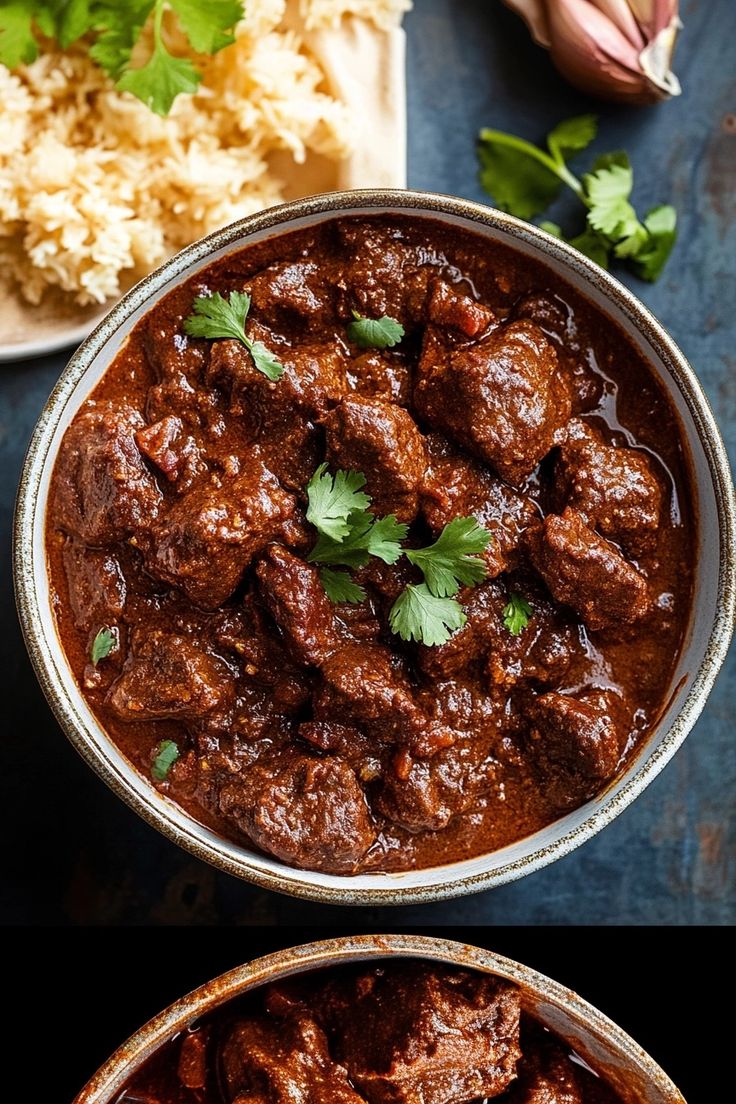Traditional Beef Vindaloo a Taste of Goa in Every Bite is a delicious recipe that combines amazing flavors and textures.
Beef Vindaloo stands as one of the most iconic dishes from Goa, representing centuries of culinary fusion between Portuguese and Indian cooking traditions. The name “vindaloo” derives from the Portuguese phrase “carne de vinha d’alhos,” meaning meat marinated in wine vinegar and garlic. When Portuguese colonists brought this preservation method to Goa in the 15th century, local cooks adapted it using indigenous ingredients like palm vinegar, spices, and the fiery red chilies that would become vindaloo’s signature characteristic.
Authentic Goan vindaloo differs significantly from the overly hot versions often served in Western Indian restaurants. The traditional balance comes from the complex layering of spices rather than sheer heat. Kashmiri chilies provide vibrant color and fruity flavor without excessive burn, while the vinegar tenderizes the meat and adds tanginess that cuts through the richness. The slow cooking process allows the flavors to meld into a harmonious, deeply flavorful curry that exemplifies Goa’s unique culinary heritage.
Historical Context and Cultural Significance
The story of vindaloo begins with Portuguese exploration and the Age of Discovery. Portuguese sailors needed preserved foods for long voyages, and meat marinated in wine vinegar with garlic proved effective for preventing spoilage. When they established colonies in Goa, they encountered an established spice trade and sophisticated culinary tradition that transformed their preservation method into something entirely new.
Local Goan cooks replaced wine vinegar with palm vinegar (today often substituted with coconut or cane vinegar), added indigenous spices like cinnamon, cloves, and peppercorns, and incorporated the New World chilies that Portuguese traders had introduced to India. The result was a dish that perfectly represented the cultural synthesis occurring in Portuguese Goa. Today, vindaloo remains particularly associated with Goan Catholic communities and special occasions like weddings and festivals.
Ingredient Selection Guide
Beef: Choose well-marbled cuts like chuck, brisket, or short ribs that stand up to long cooking. The connective tissue breaks down during simmering, creating a tender, flavorful result. For authentic Goan style, some recipes use pork, which was more commonly available historically.
Chilies: Kashmiri red chilies provide the authentic color and flavor profile. They’re moderately hot with a slightly sweet, smoky flavor. If unavailable, substitute with 2 parts paprika to 1 part cayenne pepper. Avoid using only intensely hot chilies which will overwhelm the other flavors.

Vinegar: Palm vinegar is traditional, but coconut vinegar, cane vinegar, or even apple cider vinegar work well. The acidity is crucial for tenderizing the meat and balancing the richness. Do not substitute with distilled white vinegar, which is too harsh.
Spices: Whole spices toasted and ground fresh provide superior flavor to pre-ground powders. The combination of coriander, cumin, peppercorns, and cloves creates the complex base notes characteristic of authentic vindaloo.
The Science of Marination
The extended marination period serves multiple purposes beyond flavor development. The acidic vinegar begins breaking down connective tissues in the meat through denaturation, resulting in more tender results after cooking. This process also allows the spice compounds to penetrate deeper into the meat.
The capsaicin in chilies dissolves in the oil and vinegar, distributing evenly throughout the marinade. Meanwhile, the various volatile compounds in the spices have time to meld and create new flavor compounds. This complex chemical interaction is why vindaloo benefits tremendously from extended marination – ideally overnight.
Cooking Technique Mastery
Proper browning of the onions forms the foundation of the curry’s flavor. Cook them slowly over medium heat until they reach a deep golden brown color. This caramelization creates complex sweetness that balances the vinegar’s acidity. Rushing this step by cooking over high heat will result in bitter rather than sweet flavors.
When adding the marinated meat, ensure the pot is hot enough to create some browning on the meat pieces. The Maillard reaction that occurs during browning creates hundreds of new flavor compounds that deepen the overall flavor profile. Deglazing the pot with a little water after browning incorporates these flavorful browned bits into the sauce.
The long, slow simmering is essential for breaking down the tough collagen in the beef into gelatin, which creates a luxuriously thick sauce and tender meat. Maintain a bare simmer rather than a rolling boil to prevent the meat from becoming tough and the sauce from breaking.
Regional Variations and Adaptations
While Goan vindaloo remains the classic version, regional adaptations have developed across India and beyond:
Portuguese Influence: Some modern interpretations include potatoes (a New World ingredient introduced by the Portuguese), though this is not traditional in Goan versions.
British Indian Restaurant Style: The famously hot version served in many Western restaurants amplifies the heat significantly, often using additional chili powder or fresh chilies. These versions typically have a thicker sauce and may include tomatoes, which aren’t traditional.
Goan Catholic vs. Hindu Variations: Catholic families often use pork and include more vinegar, while Hindu versions might use chicken or lamb and reduce the vinegar quantity.
Modern Interpretations: Contemporary chefs have created vegetarian vindaloos using jackfruit, potatoes, or mushrooms, and seafood versions using firm fish or shrimp.
Serving Traditions and Accompaniments
Authentic vindaloo is typically served with simple starches that balance its robust flavors. Steamed rice is the most common accompaniment, preferably Goan red rice or basmati. The neutral flavor and absorbent quality of rice help moderate the curry’s intensity.
Other traditional pairings include:
Pão: The Portuguese-inspired bread rolls popular in Goa are perfect for soaking up the flavorful sauce.
Sannas: Steamed rice cakes similar to idlis provide a soft, slightly fermented contrast.
Vegetable Side Dishes: Simple stir-fried vegetables or cooling raita help balance the heat.
Pickles: Tangy mango or lime pickles complement the vinegar notes in the vindaloo.
Storage and Flavor Development
Like many stews and curries, vindaloo often tastes even better the next day as the flavors continue to meld. Properly stored in an airtight container in the refrigerator, it will keep for 4-5 days. The vinegar acts as a natural preservative, extending the shelf life.
Vindaloo also freezes exceptionally well. Portion into freezer-safe containers, leaving some headspace for expansion, and freeze for up to 3 months. Thaw overnight in the refrigerator and reheat gently on the stovetop, adding a little water if the sauce has thickened too much.
Nutritional Considerations
While vindaloo is a flavorful dish, it can be part of a balanced diet. The spices, particularly turmeric, ginger, and garlic, offer numerous health benefits including anti-inflammatory properties. Using leaner cuts of meat and reducing the oil can lighten the dish without sacrificing flavor.
For those monitoring sodium intake, reduce or eliminate added salt and use low-sodium stock. The vinegar content may be problematic for those with acid reflux – reducing the vinegar slightly and increasing the amount of coconut milk or yogurt can help mitigate this while maintaining the characteristic tang.
Final Thoughts
Mastering traditional beef vindaloo connects you to centuries of culinary history and cultural exchange. This dish represents more than just a spicy curry – it tells the story of trade routes, colonial encounters, and the adaptive genius of home cooks who transformed foreign techniques into something uniquely their own.
As you prepare this recipe, appreciate how each ingredient and technique contributes to the final harmony of flavors. The slow marination, careful spice blending, and patient simmering all work together to create a dish that truly embodies its Goan-Portuguese heritage. Whether served for a special occasion or a comforting family meal, beef vindaloo offers a taste experience that transcends its humble origins as a preservation method for long sea voyages.

Traditional Beef Vindaloo a Taste of Goa in Every Bite
Ingredients
Method
- Soak dried red chilies in warm water for 20 minutes until softened
- Dry roast coriander seeds, cumin seeds, black peppercorns, and cloves in a pan until fragrant (2-3 minutes)
- Combine soaked chilies, roasted spices, garlic, ginger, turmeric, cinnamon, and vinegar in a blender
- Blend into a smooth paste, adding a little water if needed
- Place beef cubes in a large bowl and add the vindaloo paste
- Mix thoroughly, ensuring all pieces are well coated
- Cover and refrigerate for at least 4 hours, preferably overnight
- Heat oil in a heavy-bottomed pot over medium heat
- Add sliced onions and cook until golden brown (12-15 minutes)
- Add marinated beef and cook for 8-10 minutes, stirring occasionally
- Add sugar, tamarind paste, and salt to taste
- Pour in water or stock, bring to a boil, then reduce heat to low
- Cover and simmer for 1.5-2 hours until beef is tender
- If the curry is too thin, uncover and simmer until desired consistency
- Garnish with fresh cilantro and fried onions if using
- Serve hot with steamed rice, naan, or crusty bread



